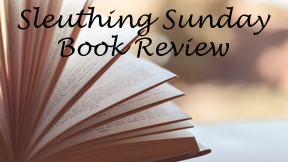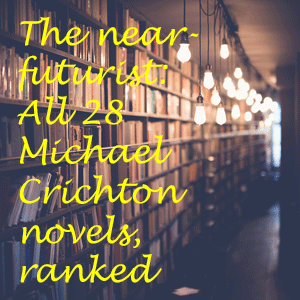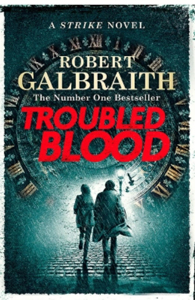As Robert Galbraith’s (J.K. Rowling) Cormoran Strike books climb to 944 pages for the fifth entry, “Troubled Blood” (2020), it raises the question of whether that’s too many for the mystery genre. My answer is that Rowling can get away with it because she’s a great line-by-line prose writer.
Granted, this novel is so long that even after the case is solved, there’s an entire sitting’s worth of reading to go. I think when I watch the TV adaptation, I’ll see that a streamlined version, focusing mostly on the case, will play just fine. But I was never bored or confused, even though it took me all my library renewals to finish “Troubled Blood.”
More than ever, Rowling is interested in portraying a mystery as it really would be. Cormoran and Robin take up a cold case from 1974 for the daughter of the disappeared (likely murdered) woman, Margot Bamborough, in 2014. By the end, we’ve experienced false leads, a key witness who can’t be tracked down, and a witness who saw something that seemed crucial but was not.

“Troubled Blood” (2020)
Author: J.K. Rowling, writing as Robert Galbraith
Genre: Mystery
Series: Cormoran Strike No. 5
Setting: England, 2014
“Harry Potter” author Rowling of course is interested in magic and mysticism, but the Strike novels are purposely grounded in pavement-pounding, file-shuffling investigations. So how to pepper in some otherworldly stuff while staying true to the Strike series’ ethos?
The police detective who went nuts probing Margot’s disappearance in the Seventies left a notebook. He pursued “clues” via the Zodiac symbols of victims, suspects and witnesses. So Strike and Robin must decipher the disgraced detective’s writings. This gives “Troubled Blood” a misty, surreal quality, appropriate as we peer back through time.
Detecting a growing bond
As with all entries in this series, Rowling tells the events alternately from Strike’s perspective and Robin’s perspective (getting into their heads in each case). But robust quoting of interviewees allows us insight into additional inner lives.
Rowling uses phonetic quotes to portray accents, social standing, mental acuity and personalities. Among the players are a shlock true crime author who hates women, an insecure fellow who changes his name as mysterious deaths follow him around, a ladies-man visual artist who finds his skills waning as he ages, and a mentally challenged mother and son who have managed to live on their own.
Due to Rowling’s methodical build of the Strike-Robin relationship via their inner thoughts, I am now on board with this aspect of the series. It truly is a conundrum now: They are the most important person in each other’s life, but we can see how if the bond becomes romantic, it could hurt their detective business. It’s a very important thing to both of them, Strike because he founded it, Robin because she found her worth in the job.

Clearing up the mists of time
As Strike and Robin move forward, “Troubled Blood” gives us the nostalgia of going back to the Seventies. The issues of that time come alive, from Margot being a doctor in what’s still a male-centric profession, to the way a charming serial killer can find success against an unwary populace of young women.
Rowling contrasts 1974 with 2014 – the date is pinpointed by the Scottish independence referendum that Strike’s friend Polworth and colleague Barclay are invested in – and modern insights into the cautions women must take when walking alone at night. The author ingeniously uses misdirection based on the typical serial killer profile, reminding us that some sociopathy can be openly detected, some can be masterfully disguised.
Partly because of character development, partly because we’re 40 years removed from the case’s violence (plus the peripherally relevant shocking actions of the serial killer who most people assume dispatched Margot), “Troubled Blood” has a Christie-esque cozy mystery vibe.
This is despite it being four times longer than a Christie book. Rowling pulls off a remarkable trick where we get a fireside whodunit along with stark, hardboiled realism. “Troubled Blood” doesn’t need to be 944 pages, but at the same time, it’s not hurt by being 944 pages.
Sleuthing Sunday reviews the works of Agatha Christie, along with other new and old classics of the mystery genre.

